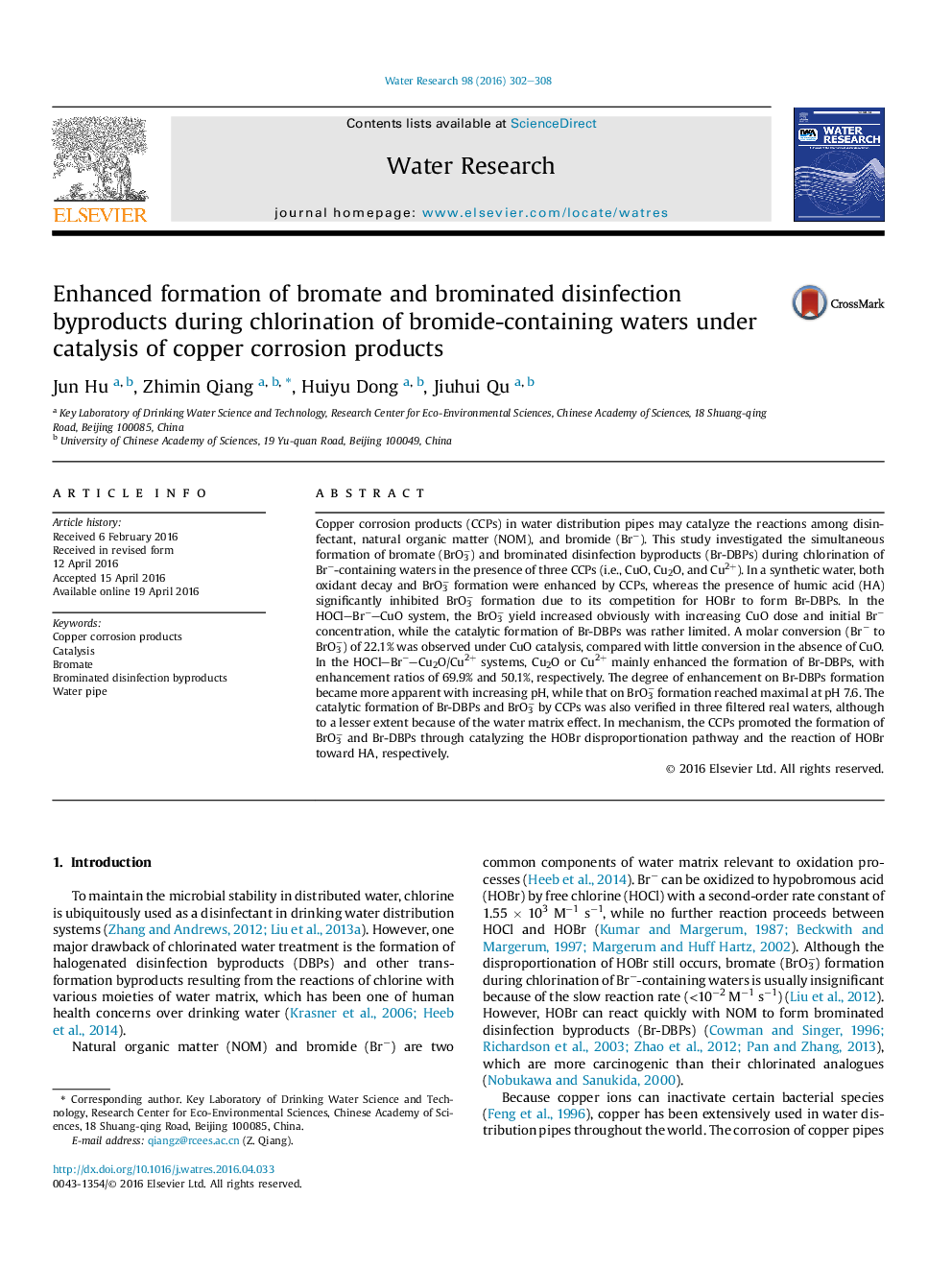| کد مقاله | کد نشریه | سال انتشار | مقاله انگلیسی | نسخه تمام متن |
|---|---|---|---|---|
| 4480996 | 1623070 | 2016 | 7 صفحه PDF | دانلود رایگان |
• Copper corrosion products (CCPs) promoted oxidant decay and BrO3− formation.
• HA obviously inhibited BrO3− formation by competing for HOBr to form Br-DBPs.
• CuO and Cu2O/Cu2+ primarily promoted BrO3− and Br-DBPs formation, respectively.
• CCPs' catalysis on BrO3− and Br-DBPs formation was verified in filtered real water.
Copper corrosion products (CCPs) in water distribution pipes may catalyze the reactions among disinfectant, natural organic matter (NOM), and bromide (Br−). This study investigated the simultaneous formation of bromate (BrO3−) and brominated disinfection byproducts (Br-DBPs) during chlorination of Br−-containing waters in the presence of three CCPs (i.e., CuO, Cu2O, and Cu2+). In a synthetic water, both oxidant decay and BrO3− formation were enhanced by CCPs, whereas the presence of humic acid (HA) significantly inhibited BrO3− formation due to its competition for HOBr to form Br-DBPs. In the HOClBr−CuO system, the BrO3− yield increased obviously with increasing CuO dose and initial Br− concentration, while the catalytic formation of Br-DBPs was rather limited. A molar conversion (Br− to BrO3−) of 22.1% was observed under CuO catalysis, compared with little conversion in the absence of CuO. In the HOClBr−Cu2O/Cu2+ systems, Cu2O or Cu2+ mainly enhanced the formation of Br-DBPs, with enhancement ratios of 69.9% and 50.1%, respectively. The degree of enhancement on Br-DBPs formation became more apparent with increasing pH, while that on BrO3− formation reached maximal at pH 7.6. The catalytic formation of Br-DBPs and BrO3− by CCPs was also verified in three filtered real waters, although to a lesser extent because of the water matrix effect. In mechanism, the CCPs promoted the formation of BrO3− and Br-DBPs through catalyzing the HOBr disproportionation pathway and the reaction of HOBr toward HA, respectively.
Figure optionsDownload high-quality image (223 K)Download as PowerPoint slide
Journal: Water Research - Volume 98, 1 July 2016, Pages 302–308
